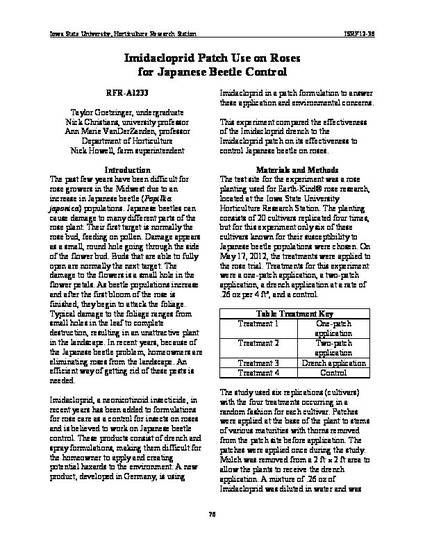
Other
Imidacloprid Patch Use on Roses for Japanese Beetle Control
Iowa State Research Farm Progress Reports
Farm
Armstrong Research and Demonstration Farm
Extension Number
RFR A1233
Publication Date
1-1-2013
Disciplines
Abstract
The past few years have been difficult for rose growers in the Midwest due to an increase in Japanese beetle (Popillia japonica) populations.Japanese beetles can cause damage to many different parts of the rose plant. Their first target is normally the rose bud, feeding on pollen. Damage appears as a small, round hole going through the side of the flower bud.Buds that are able to fully open are normally the next target. The damage to the flowers is a small hole in the flower petals. As beetle populations increase and after the first bloom of the rose is finished, they begin to attack the foliage. Typical damage to the foliage ranges from small holesin the leaf to complete destruction, resulting in an unattractive plant in the landscape. In recent years, because of the Japanese beetle problem, homeowners are eliminating roses from the landscape. An efficient way of getting rid of these pests is needed.
Copyright Owner
Iowa State University
Copyright Date
2013
Language
en
File Format
application/pdf
Citation Information
Taylor R. Goetzinger, Nick E. Christians and Ann Marie VanDerZanden. "Imidacloprid Patch Use on Roses for Japanese Beetle Control" (2013) Available at: http://works.bepress.com/annmarie-vanderzanden/2/
